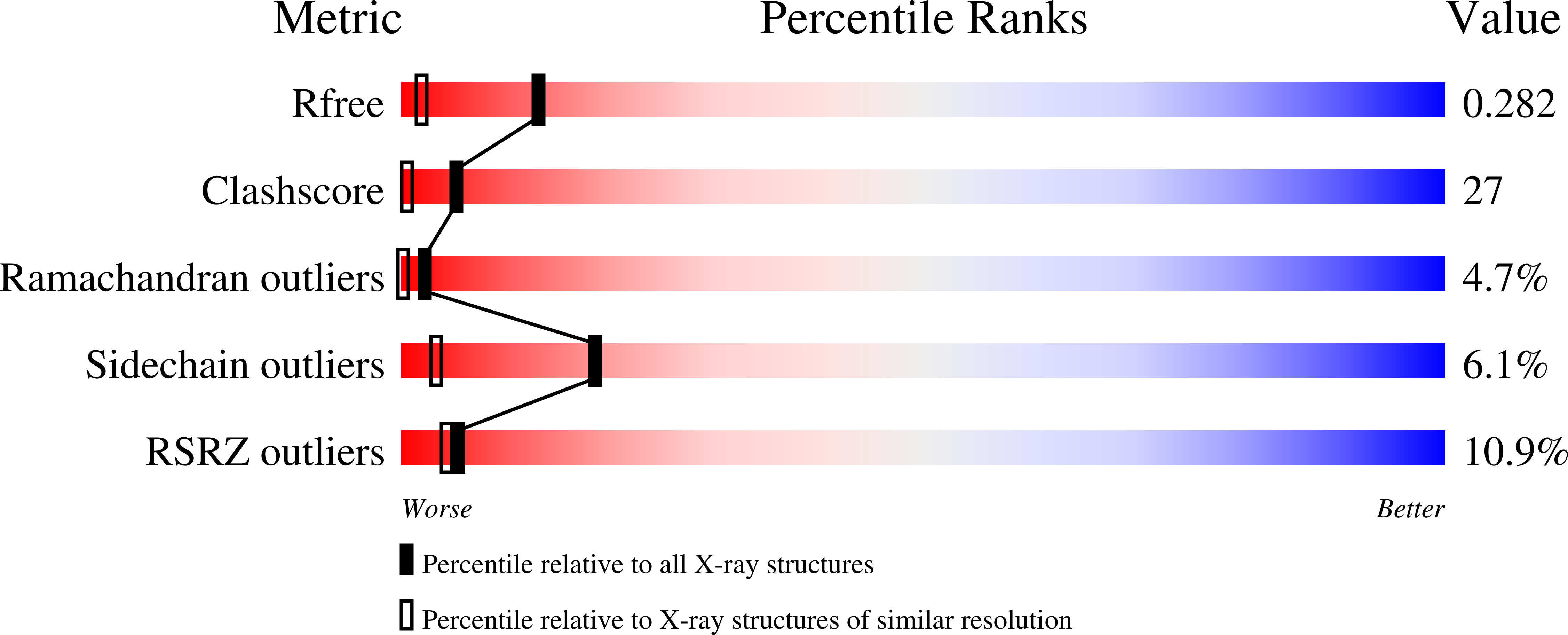Binding of Two Flaviolin Substrate Molecules, Oxidative Coupling, and Crystal Structure of Streptomyces coelicolor A3(2) Cytochrome P450 158A2.
Zhao, B., Guengerich, F.P., Bellamine, A., Lamb, D.C., Izumikawa, M., Lei, L., Podust, L.M., Sundaramoorthy, M., Kalaitzis, J.A., Reddy, L.M., Kelly, S.L., Moore, B.S., Stec, D., Voehler, M., Falck, J.R., Shimada, T., Waterman, M.R.(2005) J Biol Chem 280: 11599-11607
- PubMed: 15659395
- DOI: https://doi.org/10.1074/jbc.M410933200
- Primary Citation of Related Structures:
1S1F, 1SE6, 1T93 - PubMed Abstract:
Cytochrome P450 158A2 (CYP158A2) is encoded within a three-gene operon (sco1206-sco1208) in the prototypic soil bacterium Streptomyces coelicolor A3(2). This operon is widely conserved among streptomycetes. CYP158A2 has been suggested to produce polymers of flaviolin, a pigment that may protect microbes from UV radiation, in combination with the adjacent rppA gene, which encodes the type III polyketide synthase, 1,3,6,8-tetrahydroxynaphthalene synthase. Following cloning, expression, and purification of this cytochrome P450, we have shown that it can produce dimer and trimer products from the substrate flaviolin and that the structures of two of the dimeric products were established using mass spectrometry and multiple NMR methods. A comparison of the x-ray structures of ligand-free (1.75 angstroms) and flaviolin-bound (1.62 angstroms) forms of CYP158A2 demonstrates a major conformational change upon ligand binding that closes the entry into the active site, partly due to repositioning of the F and G helices. Particularly interesting is the presence of two molecules of flaviolin in the closed active site. The flaviolin molecules form a quasi-planar three-molecule stack including the heme of CYP158A2, suggesting that oxidative C-C coupling of these phenolic molecules leads to the production of flaviolin dimers.
Organizational Affiliation:
Department of Biochemistry, Vanderbilt University School of Medicine, Nashville, Tennessee 37232-0146, USA. bin.zhao@vanderbilt.edu
















